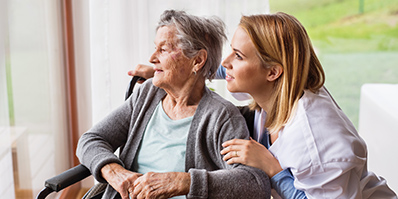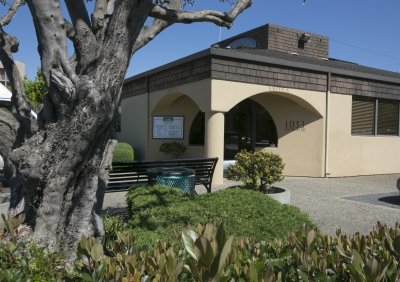Pulmonary Critical Care Department in monterey county
Respiratory Health Services
Every cell in your body requires oxygen, and the lungs work to distribute oxygen to every area of the body. Seek immediate medical attention if you or someone you know is having breathing difficulties, and try not to panic. Having trouble breathing does not mean you will suddenly stop breathing altogether at a moment’s notice. If you are in Monterey County or the surrounding area, call or visit the Salinas Valley Health Clinics Multi-Specialty Clinic. We provide critical care for lung and respiratory disorders.
The pulmonary/critical care team at Salinas Valley Health has the skill and experience necessary to diagnose lung disease quickly. Patients receive comprehensive care that coaches them on how to manage incurable conditions.
Warning Signs of Lung Disease
Speak to a doctor if you experience any of the following:
- Persistent coughing for over a month
- Short, rapid breaths and wheezing
- Loud, unusual snoring (sleep apnea)
- Chest pains
- Coughing up blood
These could be the warning signs of lung disease. The earlier you start treating lung disease, the better your chances of recovery. This is not a condition where you want to wait and see if it gets better. Waiting too long for treatment could result in permanent damage.
Lung Diseases Treated by Pulmonologists
There are numerous types of lung disease:
- Chronic obstructive pulmonary disease (COPD) – COPD is a chronic condition where an obstruction in the lungs slowly forms, making it difficult to breathe. It is most often caused by exposure to air pollution or smoking. A team of pulmonary specialists typically work together to coordinate a patient’s long-term care. The condition cannot be cured, but the more severe symptoms can be mitigated and prevented.
- Cystic fibrosis – This disease changes the way the body produces fluids like mucus and sweat and impedes their ability to work properly. It usually develops early in babies. The seriousness of this condition varies from patient to patient, with mild symptoms in some cases, and life-threatening conditions in others. Though it can’t be cured, treatment can prevent the more serious symptoms from manifesting.
- Emphysema – In this disease, various parts of the lungs deteriorate and collapse, hindering the ability to breathe. This affects not just breathing, but also blood flow, resulting in other potentially life-threatening side effects. Emphysema is not curable, but it can be managed with specialized treatment.
- Interstitial lung disease (ILD) – ILD describes a variety of diseases that thicken the tissues around the air sacs, making it difficult to breathe and supply the bloodstream with oxygen. These diseases can develop quickly or they may develop slowly over time. The damage done from ILD is often irreversible, but treatment can help improve a patient’s quality of life.
- Lung cancer – This is an aggressive form of cancer that should be treated as early as possible. Warning signs include shortness of breath, loss of appetite, and coughing up blood. The success rate at curing lung cancer improves the earlier it is diagnosed.
Lung Disease Treatments
Pulmonary rehabilitation can help patients suffering from various forms of lung disease. Given that most forms of lung disease make it difficult for patients to breathe, exercises are specially crafted at a pace that is safe. This could be as short as 1 to 2 minutes at a time. Pulmonary therapists are given special training on how to carefully monitor their patients in order to differentiate between exhaustion that will naturally occur in exercise, and that which is the result of a dangerous symptom of their condition.
You may benefit from pulmonary rehab if you have been diagnosed with:
- Asthma
- Chronic bronchitis
- Chronic obstructive pulmonary disease (COPD)
- Cystic fibrosis
- Idiopathic pulmonary fibrosis
- Sarcoidosis
Many patients who undergo chest or lung surgery may want to consider pulmonary rehabilitation during their recovery. By the end of the program, participants should have tools to help them live a normal, productive life.
It’s important to know how to deal with certain lung conditions so you can stay active and do the things you enjoy. Click here to learn more about lung and airway conditions and treatments.


